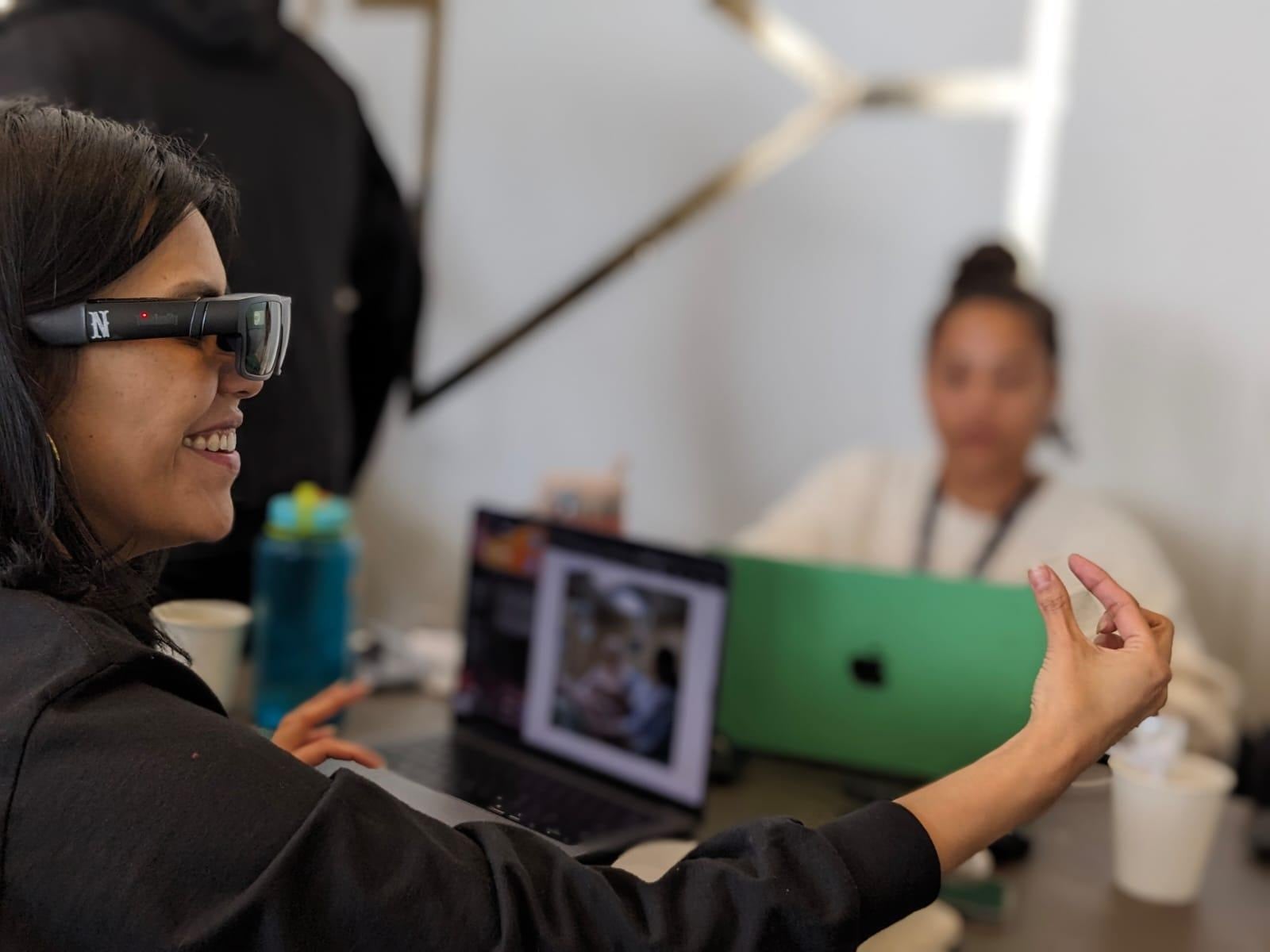MIT Hack diaries: Sunshine Cove team on hacking
By Tiffany Schmidt, Naraly Serrano, Elena Palombini, Anissa Lopez, Brian Poole
April 03, 2024

In January 2024, about 500 technology enthusiasts traveled to MIT campus to attend the 2024 Reality Hack where participants have two and a half days to create projects using extended reality technology. Here is the story how our team – Sunshine Cove hacked our way to come up with a project that would be innovative and meaningful using Snapdragon Spaces XR Developer Platform.
It took the whole first day of hacking to go through iterations and hoping to land on a final concept. Our final project idea came when when teammate Nari shared her experience as a first-year math educator of maintaining a “memory box” of items like students’ drawings, appreciative emails from parents, or notes about light-hearted classroom moments to improve mental well-being. We started dreaming up what this could look like in the virtual world for someone who may not be able to share physical keepsakes. Our users could be a long-distance couple or an elderly person disconnected from their family members because of health concerns.
Sunshine Cove MR experience invites users to craft a personalized virtual space where memories come to life. The cove acts as a canvas, allowing users to interact with the spatial collection of pictures, videos, notes, and audio recordings, keeping cherished moments within reach. What makes Sunshine Cove truly special is its collaborative feature: the ability to invite friends and family to upload to the virtual haven through an app on their phone, fostering a sense of connection and shared joy.
We knew we wanted to focus on a Mixed Reality project from the beginning. Mixed reality (MR) is defined as the combination of a virtual environment and the real world, in which it is possible to interact with digital objects, whereas augmented reality (AR) consists of a non-interactable overlay of digital elements onto the physical world. What attracted us to MR is the ability to maintain connection and visibility to the world around us, while still experiencing and interacting with virtual 3D objects and environments. Sunshine Cove’s focus on strengthening one’s happy memories is always connected to a vision of enrichment, not providing a completely different life or an escape, so it made sense for us to place our application in the context of the user’s physical world.

We were excited to develop on the Lenovo ThinkReality A3 smart glasses, which use the Snapdragon Spaces SDK, for a variety of reasons:
- They’re lightweight and easy to wear, more so than most XR headsets, and at first glance, they look like sunglasses. As smart glasses’ form factor continues to improve, we could see this technology becoming more usable and taking hold.
- The headset provides optical passthrough, so the user can see the real world accurately without lag common in other XR headsets.
- Dual Render Fusion feature opened up interesting possibilities, like making use of familiarity with mobile phone interaction to make experiences more intuitive or augmenting an already existing app with an immersive environment. These capabilities allowed to envision our project to be more accessible, enabling collaboration also by people who didn’t have the smart glasses but only a smartphone.
- Most members of the team had never built a project with these smart glasses, so it was a unique opportunity for us to try this dev kit out, with the support of the mentors from Qualcomm Technologies, Inc. who were very present and helpful!
Challenges of using Lenovo ThinkReality A3 Smart Glasses and Snapdragon Spaces
- Limited field of view – we needed to make sure objects are the right size and at a suitable distance to limit cutoff.
- The need to quickly learn all the different parts of an unfamiliar.
- There was one instance when the project validator wasn’t describing issues as it was supposed to, which caused confusion.
- The smart Glasses drained the phone battery extremely fast causing loss of work time.
Things we learned during our first hackathon and will remember in the future:
- Have willingness to consider all perspectives and concepts
- Be quick on ideation – choose a solid idea sooner to have more time to create
- Know the parameters of the product you are using – research products before the hack
- Don’t underestimate the importance of time management
- Take short walks every so often to clear your mind
- Expect technical issues and bugs
- Keep a positive attitude even when things don’t go the way you planned
Sunshine Cove is a product of our hard work, passion, and perseverance as a team. We are incredibly grateful for the opportunity MIT’s 2024 Reality Hack offered to us as we made connections with others in the field and immersed ourselves in the future of XR technology. Thank you to the Snapdragon Spaces team for allowing MIT hackers to use their product and for their support in person. We often found ourselves being helped by the team members. We will continue to push boundaries and think outside of the box as we are hopeful for the future of tech and how it continues to change our future.
Snapdragon branded products are products of Qualcomm Technologies, Inc. and/or its subsidiaries.



